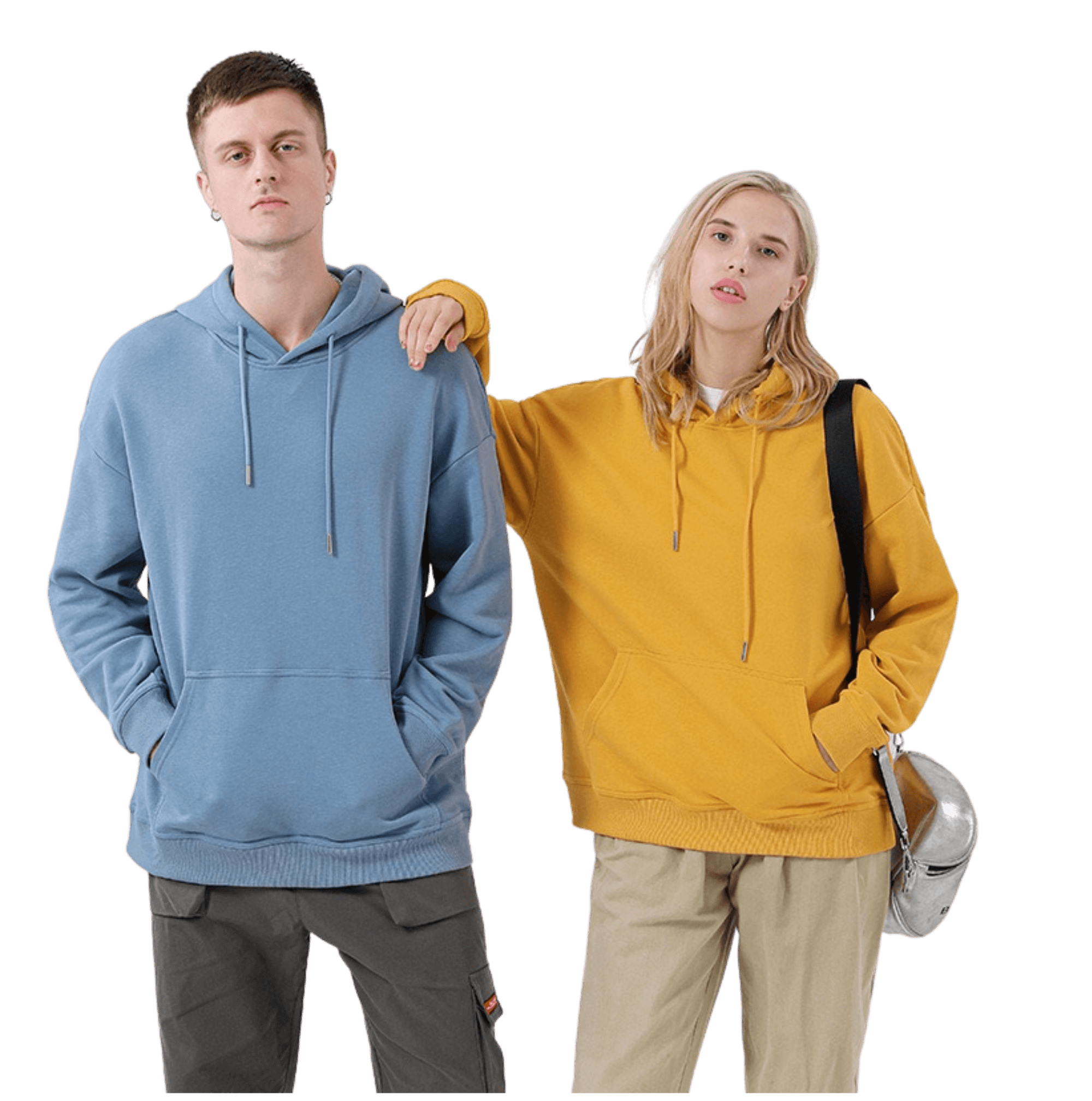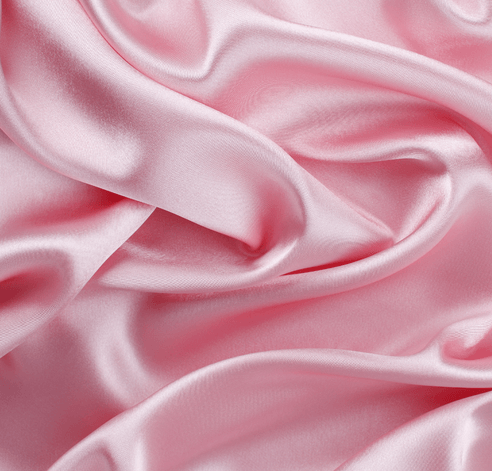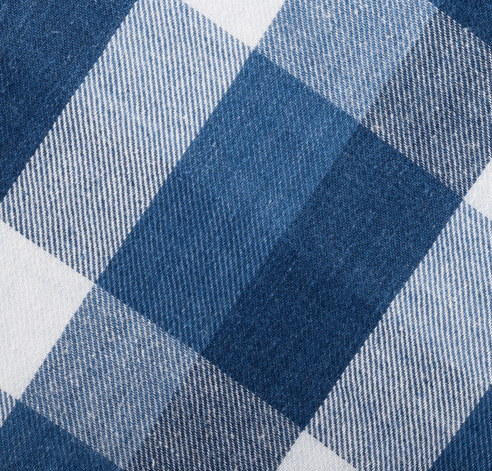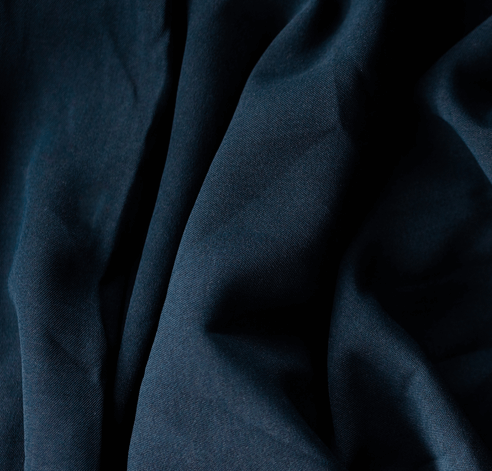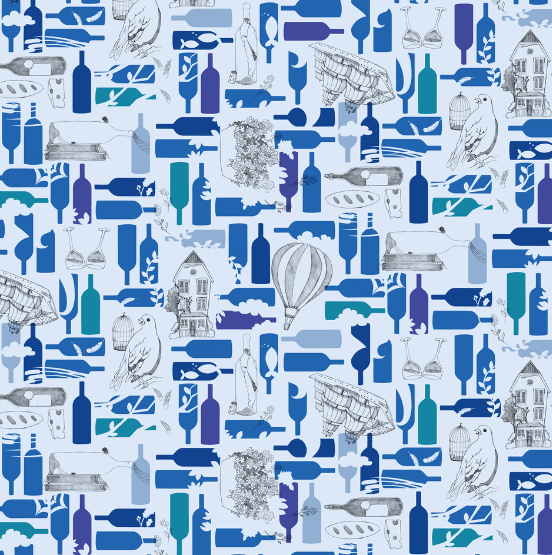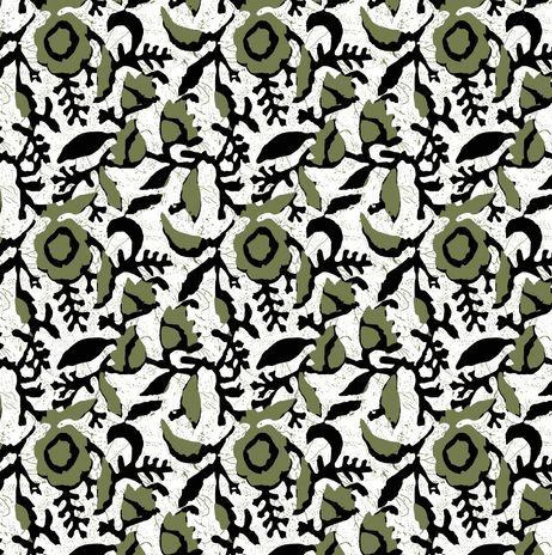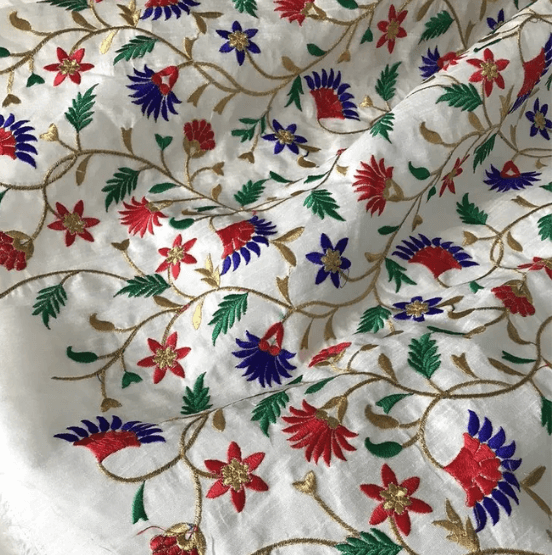1. The History of Linen Clothing
For centuries, linen was the material of choice for the clothing worn by the wealthy. Its coolness and absorbency made it ideal for warmer climates, and its strength and durability meant that it could be passed down from generation to generation.
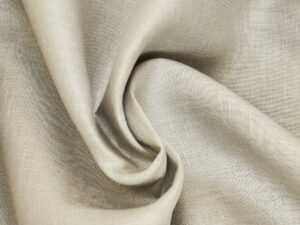
However, linen is also a very difficult fabric to work with, and so it became increasingly associated with luxury and status. In the early 20th century, new manufacturing techniques helped to make linen more affordable, and it became a popular choice for summer clothing.
Today, linen is still often seen as a symbol of wealth and power, but it is also appreciated for its comfort and style. Whether you’re dressing for a summer wedding or just looking for a comfortable pair of everyday pants, linen clothing can add a touch of elegance to any outfit.
2. The Benefits of Using Linen Clothing
Linen is a natural fiber made from the flax plant. It’s been used to make clothing and other textile items for years. Here are some of the key benefits of using linen clothing:
Strong and Durable
Linen fibers are much stronger than other fabric fibers, making them less likely to tear or break. This means that linen clothing can last longer than other types, making it a wise investment for businesses.
Absorbent
Linen fibers are very absorbent, meaning they can quickly wick away moisture from the skin. This makes linen clothing ideal for hot weather or strenuous exercise.
Hypoallergenic
Linen is a natural fiber that contains no chemicals or synthetic materials. This makes it an ideal choice for people with sensitive skin or allergies.
Sustainable
Organic linen clothing is made from a renewable resource because flax plants can be grown again and again, and the manufacturing process is much less harmful to the environment than other types of fabric production.
More Benefits of Linen Clothing explained in this video, check this out.
3. Cotton vs. Linen Clothing: What’s the Difference?
When it comes to summertime fabrics, there are only two choices: cotton and linen. And while both fabrics are casual, light, and airy, there are some pretty big differences between the two.
Here’s a quick rundown of the key differences between cotton and linen clothing:
Texture
Cotton is a smooth, soft fabric. Its fibers are shorter than those of other natural fibers, which makes it more comfortable to wear. Linen is slightly coarser and can feel stiff at times.
Breathability
Both cotton and linen are highly breathable fabrics, but linen is considered more “airflow friendly.” This makes it a popular choice for warm-weather clothing.
Absorbency
Cotton is more absorbent than linen, making it a good choice for activewear or for anyone who tends to sweat a lot. Linen, on the other hand, is less absorbent but dries quickly, making it ideal for travel or humid climates.
Wrinkling
Linen is notorious for wrinkling easily, while cotton wrinkles less readily. If you’re looking for a fabric that won’t require constant ironing, cotton is the way to go.
Price
Linen tends to be more expensive than cotton, due in part to the fact that linen is made from the fibers of the flax plant, which is more difficult to cultivate than the cotton plant.
4. Design Options for Linen Clothing
Linen is a fabric that has been around for centuries and is known for its durability and comfort. Some of the most popular design options for linen clothing wholesale include:
Button-Down Shirts
Button-down shirts are a classic choice for linen apparel wholesale. They are comfortable and can be dressed up or down, depending on the occasion. Linen dresses are perfect for summertime events or for a more relaxed look.
Pants
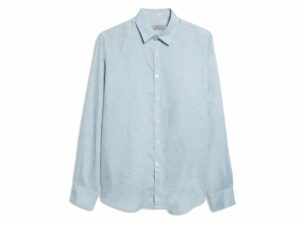
Linen pants are another great option for linen clothing. They are light and airy, making them perfect for summertime weather. Linen pants can be dressed up with a blazer and dress shoes or dressed down with a t-shirt and sneakers. Most trousers for casual wear are made of linen.
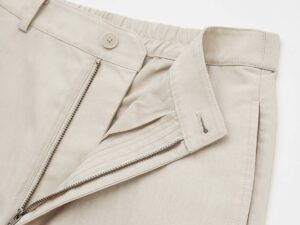
Shorts and Skirts
Linen shorts and skirts are a great choice for summertime weather. Shorts and skirts made from linen are usually baggy and comfortable, making them perfect for a day spent outdoors.
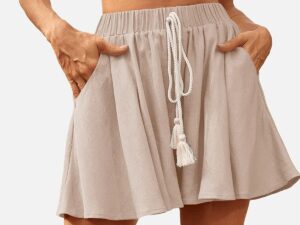
Two-Piece Outfits
A linen two-piece outfit is a perfect choice for a summertime event or a day at the office. Two-piece outfits are on top of the latest trends these days.
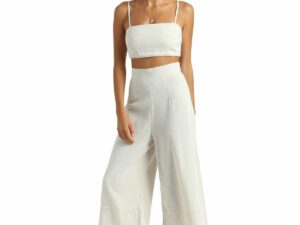
Beach Cover-Ups
Beach cover-ups are a must-have for any summertime wardrobe. Linen beach cover-ups are perfect for throwing over your swimsuit when you’re headed to the pool or beach.
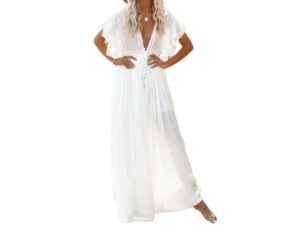
As you can see, when it comes to wholesale linen clothing, there are endless possibilities. Talk to a linen clothing manufacturer to discuss all of the different design options that are available.
5. How to Work With Linen Fabric
Linen is a beautiful fabric that can add a touch of elegance to any garment. Unfortunately, it can also be extremely tricky to work with. The good news is that with a little patience and practice, anyone can learn how to handle linen fabric like a pro.
Here are a few ways how to work with linen fabric:
Draping
Linen fabric tends to drape beautifully. This is why many designers prefer to use linen when creating garments that are meant to flow and flatter the body.
Draping can be done by hand or with the help of a dress form. If you are new to working with linen, it is best to start with a simple garment such as a sleeveless blouse or shift dress. Once you get the hang of it, you can move on to more complex designs.
Pleating
Pleating is another great way to add interest to linen garments. There are many different types of pleats, so you can experiment until you find the one that best suits your design.
To create a basic pleat, start by folding the fabric accordion-style. Then, use a needle and thread to secure the fold in place. Once you have mastered this technique, you can move on to more complex pleating techniques such as box pleats and knife pleats.
Layering
Linen is the perfect fabric for layering. Its ability to hold shape ensures that layers will always look smooth and polished.
Slashing
Slashing is a great way to show off the fabric’s unique texture. To create a slash, simply cut a slit in the fabric with a sharp knife. Be sure to take care not to cut through both layers of the layered fabric. Once you have made your cut, you can then pull the fabric apart to create a ragged edge.
6. 5 Simple Steps to Start Your Clothing Line
So, you want to start your clothing line. You have the vision, the passion, and the drive to make it happen. But where do you start? Here’s a quick guide to help you get your clothing line off the ground.
Step#1 Define Your Brand
What is your brand’s aesthetic? What kind of customers are you targeting? What are your core values? Answering these questions will help you form the foundation of your business and ensure that everything you do, from the design of your website to the way you interact with customers, is in line with your brand identity.
Step#2 Develop a Business Plan
No matter how great your fashion sense may be, starting a clothing line is a business, so you need to treat it as such. This means developing a business plan that outlines your goals, strategies, and financial projections.
A well-thought-out business plan will not only help you map out the road ahead, but it will also be essential if you ever need to secure funding from investors or lenders down the line.
Step#3 Choose a Manufacturing Partner Wisely
One of the most important decisions you’ll make when starting your clothing line is choosing a clothing manufacturing partner. This is a big decision because partnering with the wrong company can lead to delays, poor quality products, and missed deadlines, all of which can damage your reputation and tank your business before it even gets off the ground.
Do your research and take your time in finding a manufacturing partner that shares your vision and that you can trust to bring your garments to life exactly as you envision them.
Step#4 Market, Market, Market!
Now that you have a handle on the business side of things, it’s time to start marketing your clothing line to the masses. Luckily, we live in an age where there are endless possibilities for marketing online, you just have to get creative.
In addition to traditional online marketing techniques like SEO and social media advertising, consider partnering with influencers in your space or hosting pop-up shops to generate buzz around your brand.
Step#5 Always Be Evolving
The fashion industry is constantly changing, so you must always be evolving as well if you want your clothing line to be successful long-term.
This means staying up-to-date on current trends (without blindly following them), being open to feedback from customers and partners alike, and continuously innovating both in terms of design and in terms of the way you run your business as a whole.
7. Average Costs to Establishing a Fashion Clothing Line
Starting a clothing line can be a great way to express your creative vision, but it’s important to understand the costs involved before you get started. On average, it costs between $2,000 and $10,000 to launch a simple clothing line, with more complex lines running $50,000 or more.
Other costs you should take into account include:
- Fabric and trim
- Patter-making fee
- Sample-making fee
- Production costs
- Other business-related costs (e.g. rentals, utilities, taxes, etc.)
Of course, there are ways to cut costs in each of these areas, but it’s important to have a realistic sense of the expense involved in starting a clothing line. With careful planning and a strong commitment to your vision, you can create a successful fashion brand on a budget.
8. Common Mistakes To Avoid When Starting Your Own Brand
There are a lot of things to keep in mind when starting your own clothing line, but there are a few common mistakes that can trip up even the most well-prepared fashion entrepreneurs. Avoid these pitfalls and set your brand up for success from the start:
Not Defining Your Target Audience
One of the first and most important steps in starting your own brand is to define your target audience. Who are you marketing to? What are their needs and desires?
Without a clear understanding of who your target audience is, it will be very difficult to create a brand that resonates with them. Take the time to do your research and develop buyer personas for your target audience so that you can better understand their needs.
Not Differentiating Your Brand
Another common mistake made when starting a new brand is failing to differentiate it from the competition. With so many brands out there, it’s important to make sure that your brand stands out from the rest.
What makes your brand unique? What value does it offer that others don’t? Answering these questions will help you develop a positioning strategy for your brand that will make it more memorable and recognizable in the marketplace.
Not Investing In Design
Many new brands make the mistake of skimping on design or not investing in it at all. A well-designed logo, website, and marketing materials are essential for making a good impression on potential customers and conveying the right image for your brand.
Be sure to work with a professional designer who can help you create a cohesive and eye-catching visual identity for your brand.
Not Planning For The Future
When starting a new brand, it’s important to have a clear vision of where you want it to go in the future. What are your long-term goals? How will you scale your business as it grows?
Having a plan for the future will help you make decisions today that will set your brand up for success down the road.
9. Pros and Cons of Using Linen Fabric
When it comes to linen fabric, there are both pros and cons to consider. Here are some Pros and Cons of using linen fabric:
| Pros and Cons of using Linen Fabric |
| Pros |
Cons |
| Linen is strong and durable, making it a good choice for clothing that needs to last |
Linen wrinkles easily, so it requires more care than other fabrics |
| Linen is absorbent, wicking away moisture from the skin quickly |
Linen is not as absorbent as other fabrics, such as cotton |
| Linen is a natural fiber, meaning it doesn’t contain any harmful chemicals or synthetic materials |
|
| Linen is sustainable, because the flax plant can be grown again and again |
|
10. How to Get Started Working With Clothing Manufacturer
There are thousands of linen apparel wholesale manufacturers around the world, so it can be daunting to try to figure out which one is the right fit for your business. To help you get started, here are five steps you can take:
Step#1 Define Your Brand
You need to decide what kind of image you want your clothing line to project and what type of customer you want to target. Do some research on other clothing brands that you feel have a similar look and feel to what you’re going for, you can consider partnering with private label clothing manufacturers, and then use that as a starting point.
Step#2 Develop a Prototype
Once you have a good idea of the kind of clothes you want to produce, it’s time to develop a prototype. This will give you something concrete to show potential linen clothing wholesale manufacturers and will help them understand exactly what you’re looking for. If you don’t have any experience with fashion design, some services can help you develop a prototype from scratch.
Step#3 Find Clothing Manufacturers that Fit Your Criteria
There are lots of different ways to find clothing manufacturers that supplies linen clothing, but probably the easiest way is through an online directory like Alibaba. Once you find a few apparel manufacturers that look promising, contact them and ask if they’d be interested in working with you.
Step#4 Negotiate Payment Terms
Once you’ve found a few manufacturers that are willing to work with you, it’s time to start negotiating terms. The two most important things you need to agree on are payment terms and minimum order quantities (MOQ).
Most manufacturers will require that you pay upfront for your orders, but there may be some flexibility on this depending on the size of your order and the relationship you have with the manufacturer.
As for MOQ, this is the minimum number of units that the manufacturer is willing to produce for you. It’s important to try to negotiate this number down as much as possible, especially if you’re just starting out and don’t have a lot of money to invest.
Step#5 Get Samples Made
Before placing an order with a manufacturer, it’s always a good idea to get samples made first. This will allow you to see how the final product turns out and make sure that it meets your quality standards. Once you’ve received and inspected the samples, then you can place your final order with confidence knowing that what you receive will be exactly what you wanted.
11. 5 Helpful Tips When Sourcing Your Clothing Manufacturer
With so many options available, it can be difficult to know where to start when sourcing your clothing manufacturer. To help make the process a bit easier, we’ve put together a list of five tips that you should keep in mind.
#1 Do Your Research
The first and probably most important tip is to do your research. There are a lot of different clothing manufacturers out there, and not all of them are created equal.
Some may have better quality control, while others may be more focused on eco-friendly or sustainable practices. It’s important to know what’s important to you and your business and to find a manufacturer that aligns with your values.
#2 Consider Your Options
Once you’ve done your research and have a good idea of the type of manufacturer you’re looking for, it’s time to start considering your options. get price quotes from several different manufacturers to get an idea of what’s out there. Be sure to ask about things like minimum order quantities, lead times, and shipping costs so that you can compare apples to apples.
#3 Read the Reviews
Once you’ve narrowed down your options, take some time to read online reviews of the manufacturers you’re considering. This can be a great way to get an idea of what other people have experienced working with them. If there are consistently negative reviews or red flags, it’s probably best to move on to another option.
#4 Ask for Samples
Another great way to vet potential clothing manufacturers is to ask for samples of their work. This will give you a chance to see the quality of their work firsthand and decide if it’s up to your standards. It’s also a good opportunity to get a feel for the manufacturer’s customer service and turnaround time.
#5 Build a Relationship
Once you’ve found a clothing manufacturer that you’re happy with, it’s important to build a good relationship with them. The better they know you and your business, the better they’ll be able to meet your needs. Be sure to communicate any changes or new requirements as soon as possible so that there are no surprises down the line.
Dive Deeper Into Our Resources
Looking for more diverse product options? Browse through our handpicked selections:
For some insightful reads, we’ve curated a list of recommended articles just for you:
Still haven’t found what you’re looking for? Don’t hesitate to contact us. We’re available around the clock to assist you.
Conclusion
Linen clothing is a great way to add a touch of luxury to your brand. But before you can start with your first collection of linen clothing, you need to find a manufacturer that can help you bring your vision to life.
If you’re launching a brand or searching for a clothing manufacturer, Hongyu Apparel is your ideal partner. We offer services for both private labels and custom clothing production across a variety of styles. With over 20 years of experience in the industry, we’re equipped to assist you at every step of the process. From design to production, we’ll collaborate with you to craft a high-quality product that your customers will adore. Contact us today to begin!

